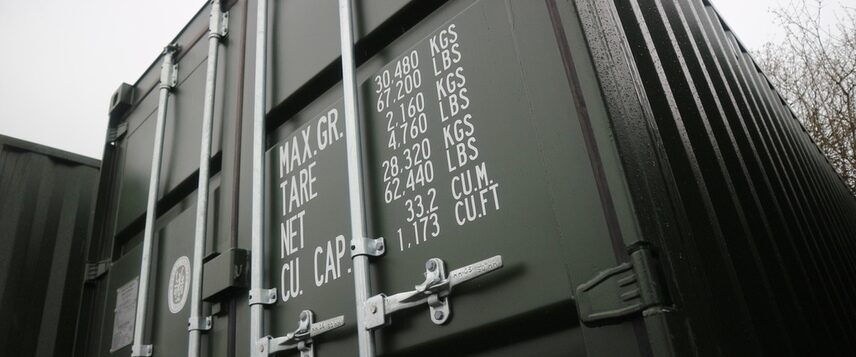The allure of China’s vast manufacturing landscape and competitive prices extends to the United Arab Emirates (UAE). However, navigating the intricacies of shipping your goods from China to the UAE can be daunting, especially when it comes to understanding the costs involved. Fear not, intrepid importer! This comprehensive guide will equip you with the knowledge to demystify the maze of shipping costs and ensure a smooth, cost-effective journey for your cargo.
Understanding the Factors that Affect Shipping Costs from China to UAE

Several key factors influence the final price tag for shipping your goods from China to the UAE. Here’s a breakdown of the major players:
- Weight and Dimensions: This is the most significant factor. Shipping costs are typically calculated by volumetric weight (length x width x height) or actual weight, whichever is higher. So, even a lightweight item with bulky packaging can incur higher charges.
- Shipping Method: Air freight offers the fastest delivery times but comes at a premium. Sea freight, while considerably cheaper, takes longer. There are also options like Less-than-Container Load (LCL) for smaller shipments and Full Container Load (FCL) for larger quantities.
- Origin and Destination Cities: Costs can vary depending on the specific ports in China and the UAE you’re shipping from and to. Distance plays a role, and ports with higher traffic volume might have slightly different rates.
- Fuel Surcharges: Fuel prices fluctuate, and shipping companies often add surcharges to cover these changes. Be sure to inquire about current fuel surcharge rates when obtaining quotes.
- Additional Services: Services like customs clearance assistance, insurance, and delivery to your doorstep add to the overall cost.
Calculating Shipping Costs Based on Weight and Dimensions

There are two main methods for calculating shipping costs based on weight and dimensions:
- Volumetric Weight: This considers the package’s size rather than just its actual weight. It’s calculated by multiplying the length, width, and height of the package and dividing it by a specific factor (usually 5,000 or 6,000). The higher value between the volumetric weight and the actual weight is used to determine the shipping cost.
For example, if your package measures 50 cm x 40 cm x 30 cm and weighs 10 kg:
- Volumetric weight = (50 x 40 x 30) / 6,000 = 25 kg
Since the volumetric weight (25 kg) is higher than the actual weight (10 kg), the volumetric weight will be used for cost calculation.
Tip: When packing your goods, consider optimizing space to minimize the package’s size and reduce volumetric weight costs.
Additional Charges and Fees to Consider
Beyond the base shipping cost, several additional charges and fees can add to your final bill. Here are some common ones:
- Terminal Handling Charges (THC): These fees cover the cost of loading and unloading your cargo at the ports.
- Customs Clearance Fees: Fees associated with processing your shipment through customs in both China and the UAE.
- Inland Transportation: Costs for transporting your goods from the port to your final destination within the UAE.
- Documentation Fees: Charges for preparing necessary shipping documents and certificates.
- Insurance: Optional, but highly recommended, to protect your cargo in case of damage or loss during transit.
Different Shipping Methods and Their Costs

The choice of shipping method significantly impacts the cost and delivery time of your goods. Here’s a breakdown of the most common options for shipping from China to the UAE:
- Air Freight: The fastest option, with deliveries typically taking 3-7 days. However, it’s also the most expensive, with costs ranging from $2 to $4 per kilogram.
- Sea Freight: The most cost-effective option, with delivery times ranging from 20 to 40 days. Sea freight is further divided into:
- Full Container Load (FCL): Ideal for large shipments, where you rent an entire shipping container. Costs typically range from $1,500 to $2,500 per 20-foot container.
- Less-than-Container Load (LCL): Suitable for smaller shipments that share space in a container with other cargo. LCL costs are generally calculated per cubic meter, ranging from $50 to $100.
The best shipping method for you depends on your priorities. If speed is crucial, air freight is the way to go. However, if budget is a primary concern, sea freight, particularly LCL for smaller shipments, offers a cost-effective solution.
Tips for Reducing Shipping Costs from China to UAE
Here are some valuable tips for reducing shipping cost from China to the UAE:
- Consolidate Shipments: If you regularly import from China, consider consolidating smaller orders into larger shipments. This allows you to take advantage of economies of scale and potentially qualify for FCL rates, even for smaller quantities.
- Negotiate Rates: Don’t be afraid to negotiate with shipping companies, especially for larger shipments. Building a good relationship with a reliable freight forwarder can lead to better rates in the long run.
- Optimize Packaging: As mentioned earlier, minimizing package size by using appropriate packing materials and techniques can significantly reduce volumetric weight costs.
- Choose the Right Origin and Destination Ports: Research shipping costs from different ports in China. Sometimes, using a slightly less busy port can lead to lower costs. Similarly, consider the final delivery point within the UAE. Inland transportation costs can vary depending on the distance from the port.
- Inquire About All-Inclusive Rates: Some freight forwarders offer all-inclusive rates that cover not just the base shipping cost but also terminal handling charges, customs clearance fees, and inland transportation. This can simplify budgeting and potentially offer cost savings.
Customs Duties and Taxes in the UAE

When importing goods from China to the UAE, you’ll likely incur customs duties and taxes. The specific rates depend on the type of product you’re importing and the Free Trade Agreement (FTA) status between China and the UAE. It’s crucial to research these duties and taxes beforehand to avoid any surprises at customs clearance. Here are some resources to help you:
- UAE Ministry of Finance: https://mof.gov.ae/ (Arabic only, but you can use a translation tool)
- The GCC Customs Union: https://www2.deloitte.com/xe/en/pages/tax/articles/countries-adopt-revised-2022-customs-tariffs-gcc.html
Shipping Insurance and Tracking Options
While not mandatory, shipping insurance is highly recommended. It protects your cargo financially in case of damage, loss, or theft during transit. The cost of insurance varies depending on the value of your goods and the chosen coverage.
Most reputable shipping companies offer cargo tracking options that allow you to monitor your shipment’s progress in real-time. This provides peace of mind and helps you plan for its arrival.
Choosing a Reliable Shipping Provider
Selecting a reliable shipping provider is crucial for a smooth and cost-effective import process. Here are some factors to consider:
- Experience: Choose a company with experience handling shipments between China and the UAE.
- Service Offerings: Look for a provider that offers a range of services to meet your needs, such as customs clearance assistance, cargo insurance, and inland transportation.
- Reputation: Research the company’s reputation online and read customer reviews.
- Competitive Rates: Compare quotes from several providers to ensure you’re getting the best possible price.
Tip: Building a long-term relationship with a reliable shipping provider can lead to better rates, personalized service, and a smoother import experience over time.





